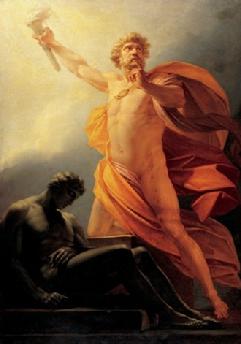Part of my college essays series: This is one of the essays I wrote during the political theory general exam for my PhD. The exam was an approximately 15-hour marathon session, involving 6 out of 12 essay questions, for a final total of 33 double-spaced pages written without access to any notes or sources.
The cycle of decline from the best regime to the worst is an important aspect of Plato’s Republic, and not merely for the mundane purposes of history and political science. In elaborating the logic of this decline, Plato couples his discussion of the rank order and decline of the five regimes with five corresponding types of man. For this reason it is necessary to understand the philosophical anthropology underlying Plato’s political philosophy as well as the anthropological principle, i.e., that the city is man writ large. Additionally, and perhaps of equal importance as a clue to Plato’s primary purpose in writing the Republic, we are shown (purposefully?) in the discussion of the cycle of decline the utopian nature of Plato’s “city in speech.”
The five regimes in order of best to worst are kingship or aristocracy, timocracy, oligarchy, democracy, and tyranny. The corresponding types of man are the kingly or aristocratic man, the timocratic man, the oligarchic man, the democratic man, and the tyrant or tyrannical man. Before delving into the cycle of decline and the natures of these different types of regimes and men, it is necessary to briefly explicate Plato’s philosophical anthropology.
